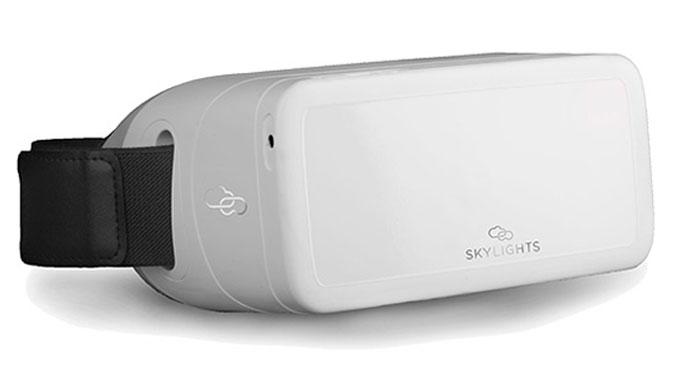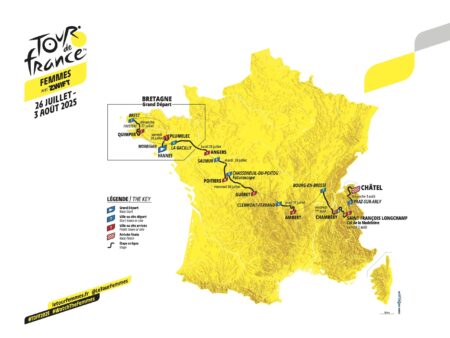Air France has launched trials of a cutting-edge virtual reality (VR) entertainment system, signaling a new era in in-flight passenger experience. The airline’s initiative aims to enhance luxury travel by offering immersive, interactive entertainment options that go beyond traditional screens. This move highlights Air France’s commitment to innovation and elevating comfort for its premium customers, as the aviation industry explores advanced technologies to redefine air travel.
Air France Launches Pilot Program for Innovative VR Entertainment on Flights
In a bold step toward redefining in-flight leisure, Air France has introduced a trial phase of its cutting-edge virtual reality (VR) entertainment system aboard select routes. This initiative aims to offer passengers an immersive experience that transcends traditional screen-based options. Equipped with state-of-the-art VR headsets, travelers can dive into a spectrum of engaging content, including interactive 3D tours, cinematic experiences, and exclusive Air France-themed environments designed to enhance relaxation and enjoyment during their journey.
Key features of the VR entertainment pilot include:
- Custom curated VR films and documentaries
- Interactive travel guides and destination previews
- Personalized entertainment based on passenger preferences
- Noise-cancellation technology integrated within VR headsets
- Seamless switching between VR and traditional entertainment systems
| Flight Route | Duration of Test | Passenger Feedback Score |
|---|---|---|
| Paris to New York | 6 weeks | 4.7/5 |
| Paris to Tokyo | 4 weeks | 4.4/5 |
| Paris to Rio de Janeiro | 5 weeks | 4.8/5 |
Passengers React to Immersive VR Experiences Enhancing In-Flight Comfort
Feedback from travelers who have experienced Air France’s immersive VR system mid-flight has been overwhelmingly positive. Passengers highlighted the remarkable ability of VR headsets to transport them far from the confines of the aircraft cabin, citing sensations of relaxation and distraction from typical travel stresses. Many noted how this technology added a refreshing element of escape, turning long-haul segments into surprisingly enjoyable journeys.
Reported benefits include:
- Reduced feelings of anxiety and restlessness through engaging virtual environments
- Enhanced perception of space despite the physical limitations of the cabin
- Interactive options, such as virtual tours or calming nature scenes, that passengers can tailor to their preferences
| Passenger Age Group | Most Enjoyed VR Experience | Reported Comfort Improvement |
|---|---|---|
| 18-30 | Virtual City Walks | High |
| 31-50 | Relaxation & Meditation | Very High |
| 51+ | Documentary and History Tours | Moderate |
Expert Analysis on VR Technology Integration in Commercial Aviation
Air France’s pioneering approach to embedding virtual reality directly into its cabin entertainment marks a substantial leap forward for commercial aviation. By integrating VR headsets in select routes, the airline aims to transform passenger experience, offering immersive content that goes beyond traditional screens. This strategic move not only enhances onboard engagement but also aligns with the growing demand for personalized, cutting-edge travel entertainment.
The adoption of VR technology presents several operational and experiential benefits that Air France is actively exploring:
- Reduced itinerary fatigue by providing relaxing virtual environments to combat jet lag.
- Interactive safety demonstrations enhancing passenger understanding through immersive visuals.
- Potential for exclusive branded content partnerships, driving ancillary revenue streams.
- Increased passenger satisfaction by catering to tech-savvy travelers seeking novel inflight experiences.
| Feature | Current Status | Expected Impact |
|---|---|---|
| VR Headset Usability | Pilot-testing on long-haul flights | Improved passenger engagement and comfort |
| Content Library | Curated immersive movies and games | Extended entertainment variety |
| Safety Applications | Under development | Enhanced safety briefing impact |
Recommendations for Airlines Considering VR Systems to Elevate Passenger Experience
When integrating VR systems into airline services, a meticulous approach toward user experience is paramount. Airlines should prioritize intuitive interfaces that accommodate passengers of all ages and tech-savviness, ensuring ease of use from the moment VR goggles are handed out. Furthermore, fostering partnerships with content creators can significantly diversify and enhance the entertainment offerings, ranging from immersive virtual tours of destinations to calming meditation environments designed to reduce travel anxiety.
Operationally, careful consideration must be given to hygiene protocols and device maintenance, since VR equipment requires handling by multiple passengers. Implementing a robust cleaning regimen and using disposable face covers can boost traveler confidence. Additionally, airlines should explore flexible business models for VR deployment, such as in-flight rental fees or exclusive premium class access. The table below summarizes key factors to consider when adopting VR technology:
| Consideration | Recommended Action | Impact |
|---|---|---|
| User Interface | Simplify navigation and controls | Increased passenger satisfaction |
| Content Variety | Curate diverse VR experiences | Engagement and repeat usage |
| Hygiene | Implement strict cleaning protocols | Improves safety perception |
| Business Model | Offer flexible access options | Enhances revenue streams |
In Retrospect
As Air France takes a pioneering step into virtual reality entertainment, the airline continues to redefine the luxury travel experience. The ongoing VR system testing signals a future where passengers can immerse themselves in innovative and personalized in-flight content, setting new standards for comfort and engagement at 30,000 feet. Industry observers will be watching closely as Air France moves from testing to rollout, potentially shaping the next chapter of air travel entertainment worldwide.




